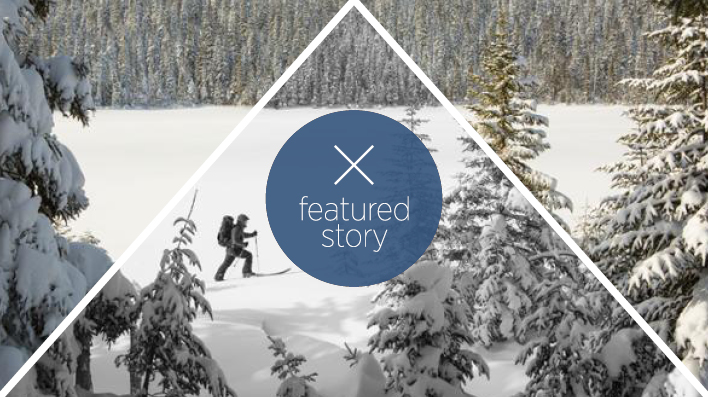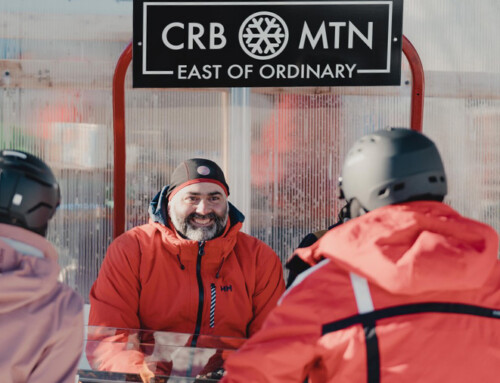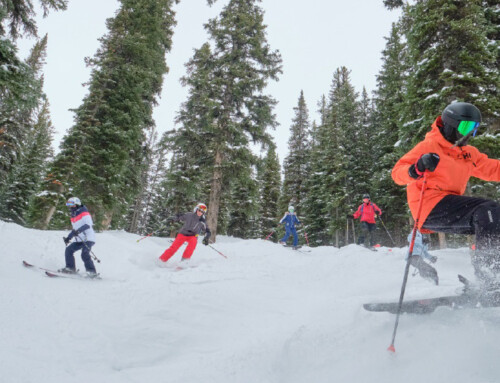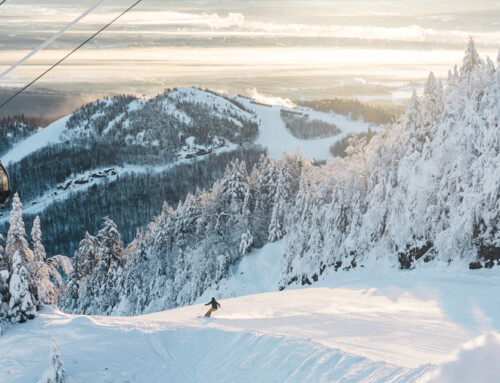By Dave Fonda
Ski hors piste*. Backcountry. Ski adventure. Alpine Touring. Randonnée Alpine. Sidecountry. Ski sauvage. Slackcountry. Ski randonée. Ski Touring. In Quebec, there are almost as many ways of saying ‘backcountry skiing’ as there are ways of doing it. But no matter what you call it, one thing is certain: Alpine Touring (AT) hasn’t just taken off in la Belle Province. It’s transforming the way more and more skiers are taking to the hills and making the most of them.
So, who are these backcountry converts? Why are they shopping up such a storm? And, just where and how do they indulge their newfound love?
The Lower Laurentians: cradle of North American skiing
To find out, I began my quest in the cradle of North America skiing, the Lower Laurentians, north of Montreal. The region is peppered with iconic names such as Morin Heights, home of the legendary Herman Jackrabbit Johannsen, Avila, Mont Saint-Sauveur, and le Chanteclerc. In 1932, a local entrepreneur named Alex Foster invented “uphill skiing” when he converted an old truck and several lengths of sturdy twine into the world’s first rope tow (ask your grandparents). For a nickel a ride, his newfangled contraption would whisk skiers to the top of his ski slope in Shawbridge.
Many of the ski hills that sprang up, and once prospered here, have long since disappeared. As has le Petit Train du Nord that once fed them a steady stream of eager skiers from Montreal. But the area is still well seasoned with small feeder hills that keep churning out World Class and Olympic champions like Mikaël Kingsbury and the Dufour-Lapointe sisters.
The Lower Laurentians are also home to a new wave of Alpine Tourers who, with a tip of the tuque to the region’s storied past, are rediscovering the merits and joys of earning their turns, one step and glide at a time.
Bienvenue à Mont Tremblant
“At Tremblant,” says Daniel Lachance, “you have the serious types who backcountry ski to get in shape for their annual Alpine Touring adventure. But we’re also seeing more and more women switching to AT because they love the lightweight gear.” With their rockered toes and hike & ski mode cuffs, AT boots are becoming a huge hit among Tremblantistas. They love being able to transition from skiing on the slopes to après-skiing in the village without having to stop and change their footwear.
Says Daniel, “most new AT converts are content to ride the lifts and ski the trails with their new lightweight gear. But they also have the option of hiking up when the lift-lines are too long and the slopes are too crowded. Also, when it gets really cold here, instead of standing in line and riding a cold chair, they can either hike up a ski trail or one of the climbing trails in the woods, where they can stay warm and maybe even work up a little sweat.”
Alpine Touring is so well established at Tremblant, the mountain is hosting its third annual AT festival where experts and newbies alike can demo the newest gear, take a lesson go on a guided tour. Even at night.
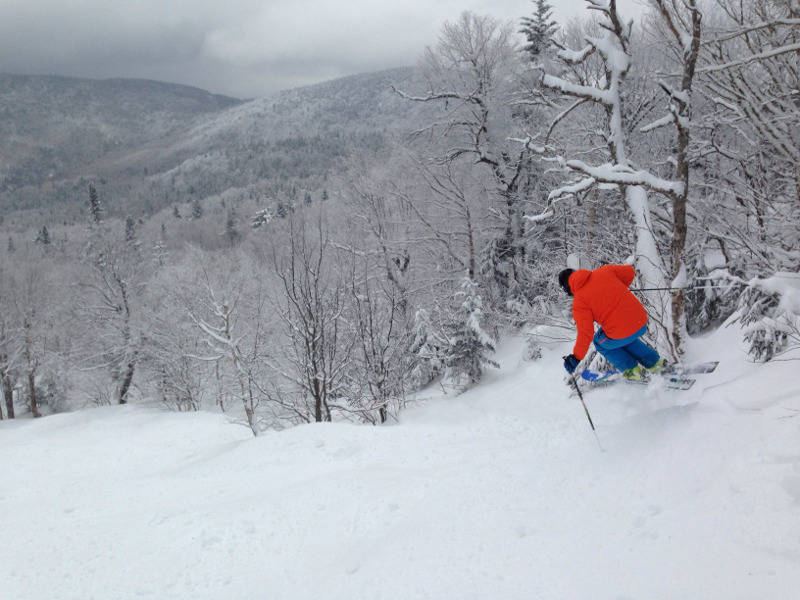
Bienvenue and Welcome to the Eastern Townships
Dr. George Austin Bowen formally introduced alpine skiing to the Eastern Townships, southeast of Montreal, in 1938 when his dream of making Mont Orford a park with a ski hill finally came true. Today, because the terrain flanking Orford’s myriad ski trails is still provincial parkland, backcountry skiing on it is, strictly speaking, officially verboten. That said, Orford has some of finest glades in the country. If you’re content to ride a lift to ski them, you’re more than welcome to join the many AT enthusiasts here that do.
Nearby Owl’s Head earned its backcountry cred with a tidy network of climbing and ski trails. Unfortunately, the man behind them, Luke ‘Skypowder’ Saint-Jacques is no longer here in his official capacity. Ski them at your own peril.
Now if you think skiing with a bunch of seventy-year-olds sounds lame, try keeping up with them. Word of warning: don’t even think about out-skiing the women.
Sutton’s special AT tickets let skiers access the area’s beginner, intermediate and expert climbing trails. All skiers must ski down Sutton’s marked ski trails. If your tastes run to the ‘wild side’ with lots of trees, natural snow and bumps, la Fantaisie, Éxtase and Séduction deliver.
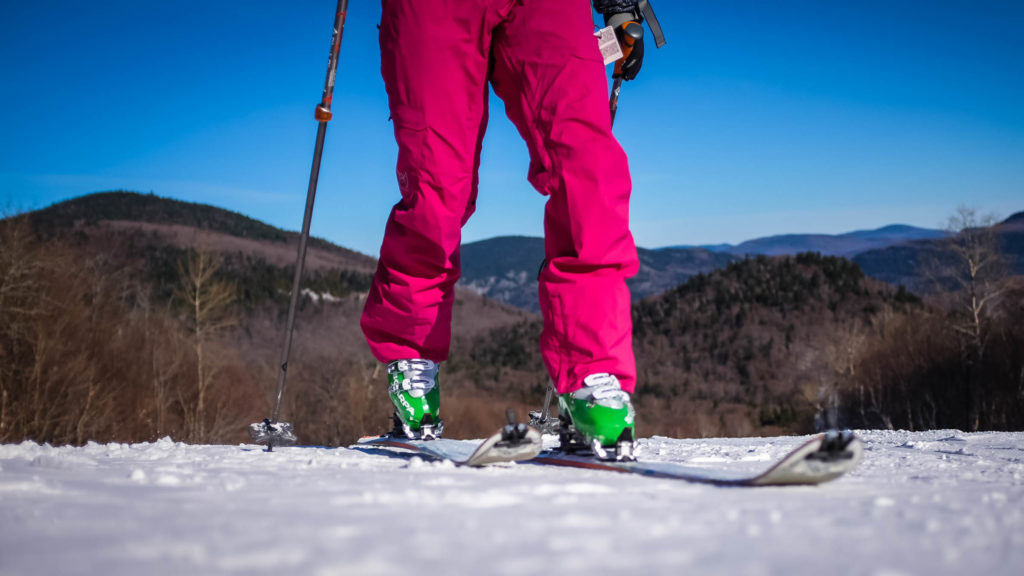
Alpine Touring Mont-Sainte-Anne (MSA)
Towering the Saint Lawrence River just 30 minutes east of Quebec City, Mont Sainte-Anne serves up some of the best ski terrain in Eastern North America. That is to say anywhere. It’s also become a favourite destination for backcountry skiers who can now summit via four different climbing trails: two up the South Side, and two up the North. MSA’s North Side typically gets and retains the most snow. The ski season usually starts sooner here and ends later. It is also a shorter ascent than the South.
Says MSA’s Lisa-Marie Lacasse, “About half our backcountry skiers are men, the other half, women. Most are season pass holders and baby boomers who have been skiing here for years. Many will ride the lifts and ski the trails all morning, then hike and ski in the afternoon.”
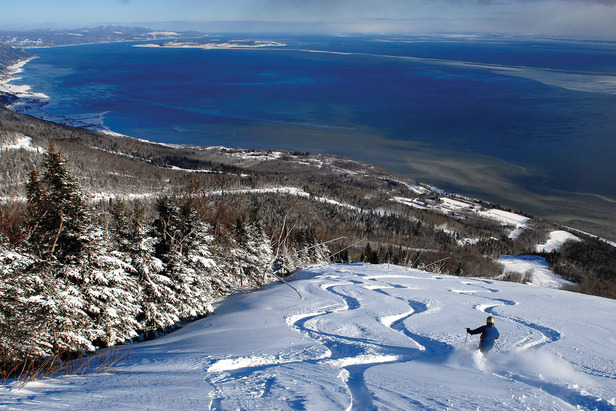
Attaining Higher Learning at le Massif
Once upon a time, old, yellow school buses used to ferry eager skiers from the picturesque riverfront village of la Pétite-Rivière-Saint-François to the summit of le Massif du Charlevoix. As the buses gave way to high-speed chairlifts and, eventually, a gondola, le Massif’s reputation for bountiful snow and long, leg-shredding trails continued to grow. Having Cirque du Soleil co-founder and financial whiz Daniel Gauthier come on-board also helped, as did hiring Jean-Luc Brossard as the area’s chief on-hill ambassador.
The mountain established its cred as a serious backcountry destination when it opened Mont Liguori. Notably steep, deep and heavily treed, it’s a favourite mettle-testing ground for Alpine and backcountry skiers and shredders alike.
This year, Cédric Blouin and Michel Bisson have upped the AT ante by opening their Whisjack mountain adventure centre at le Massif. They focus on introducing skiers and riders to the backcountry, guiding and, especially, on educating them about avoiding the inherent risks while reaping the pleasures of skiing and riding off-trail.
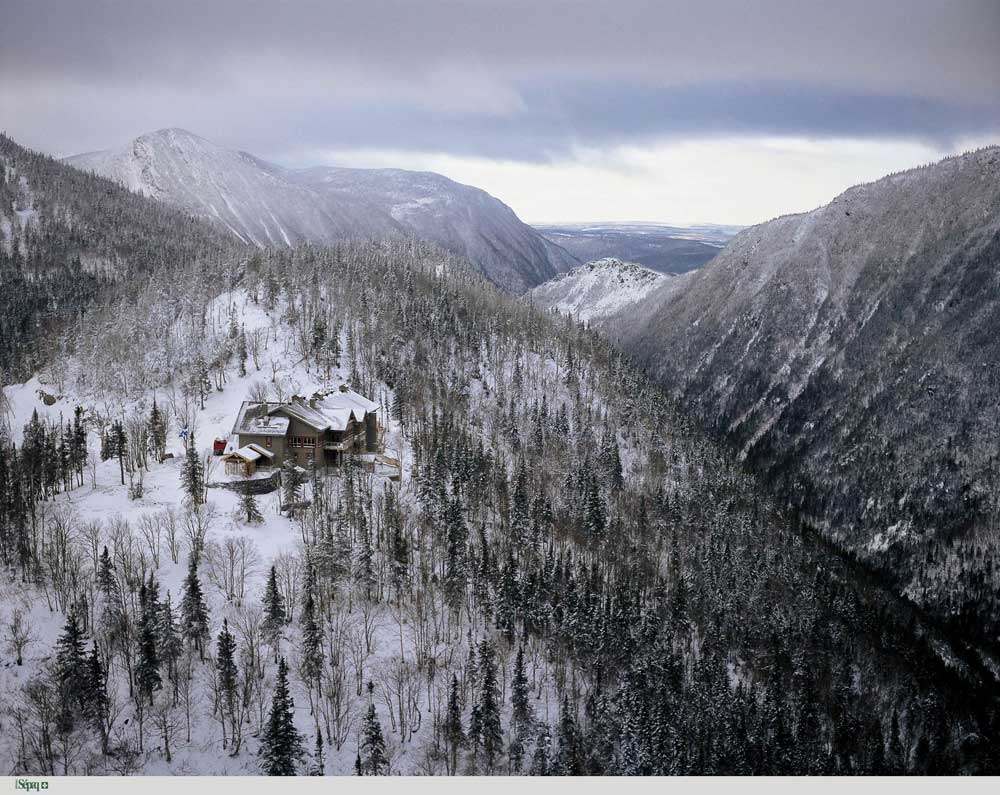
Les Chic-Chocs: Quebec’s AT Mecca
The Chic-Choc Mountains in snow-laden Gaspésie receive on average 700 centimetres of the great white fluffy stuff per year. Though these ancient craggy peaks have been eroded and smoothed by Atlantic Coastal winds, the mountains are steep and inviting. They are also accessible via chairlift, snowmobile, snowcat, helicopter or foot. Is it any wonder so many Quebec skiers call the area Mecca?
Backcountry skiers coming here to find their bliss have several options including Ski Chic-Chac and Ski Chic-Choc. This is not a test. Yet.
Ski Chic-Chac is based in Murdochville and offers AT skiers and riders four distinct options.
- You can ride the lifts and access the 32 trails and glades of Mount Miller.
- Or you can heli-ski or cat-ski the 15 treed runs of York Mountain
- or the 12 runs and two powder fields of Porphyre Mountain.
- Or you can use your own steam and hike and ski Lyall Mountain, preferably, with a guide.
The choice is entirely yours. Though the verticals are modest by West Coast standards, the snow is plenty deep and all natural. Communal dining and affordable rates (Murdochville teens ski Mt. Miller for free) have made Ski Chic-Chac a favourite destination with younger AT enthusiasts.
Bon ski.



